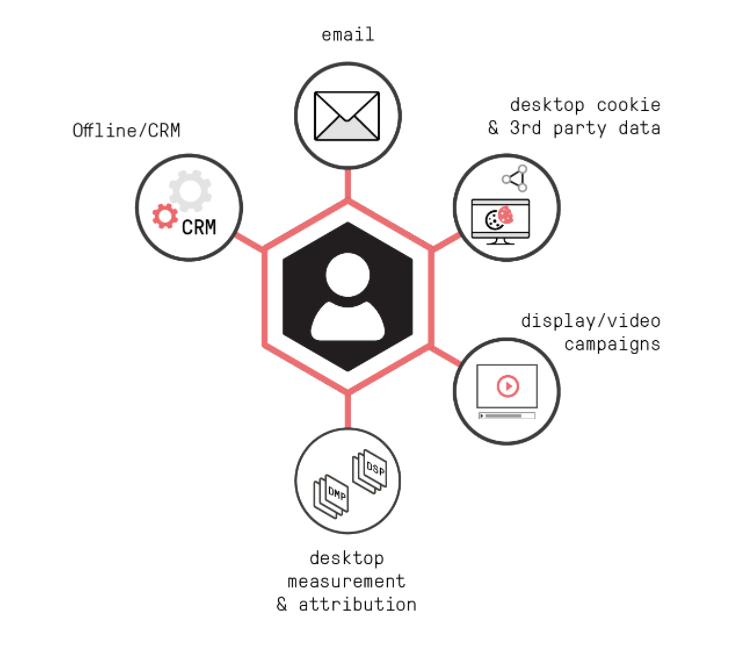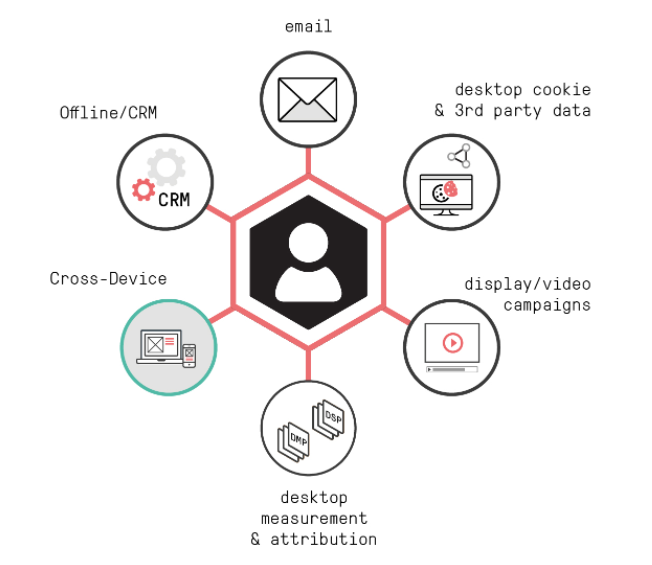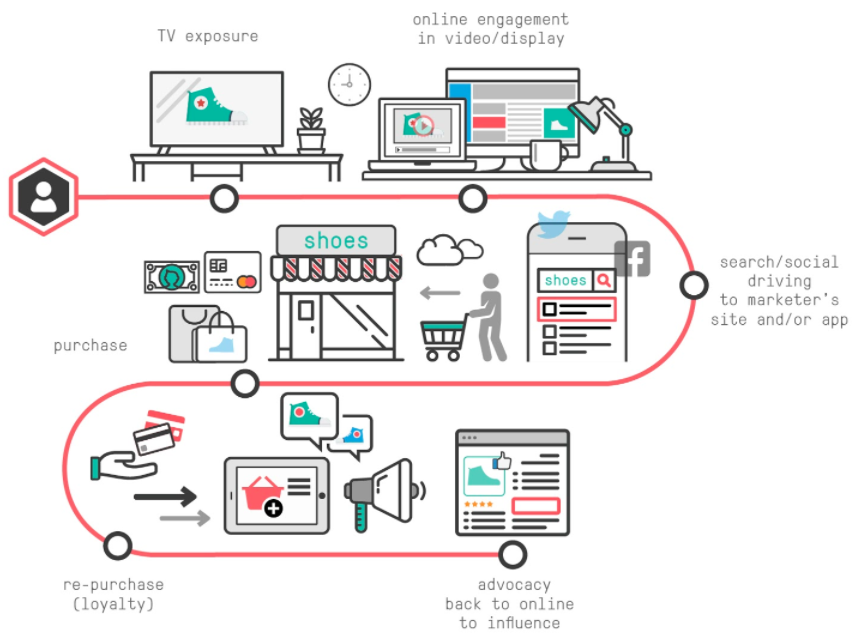Cross Device & Tomorrow’s Customer Journey: A Blueprint
by Lindsay Rowntree on 1st Nov 2016 in News

In his latest column for ExchangeWire, Gareth Davies (pictured below), founder and CEO, Adbrain, keeps us informed of the evolving trends of cross device and what the future holds for people-based identity.
In a recent post for ExchangeWire, I argued the strategic imperative for marketers to de-silo their rich, customer-centric data assets to create a single customer view for cross-device measurement, attribution, and targeting. Citing the spoils of a single-customer utopia, true omni-channel customer journeys could be mapped across a consumer’s digital devices, insights derived, holistic reach and frequency controlled, brand awareness and engagement enhanced, and sales increased. I even offered real-life case studies as proof of today’s reality. If only resolving customer identity was that easy; the good news is that a credible path exists.
Make no mistake, brands and publishers are investing in the software, data, and capabilities (people and partners) to understand their customers. Witness a whirlwind dmexco 2016 and the bumper M&A news of the last few weeks. Our industry is staying true to form, pursuing a path of aggressive, rip-your-face-off change. Or, as Terry Kawaja would call it, "consolidation". Looking beyond the narrative of deep-pocketed Chinese buyers, the themes emerging are enhanced data and identity capabilities, be they mobile (Applovin), data management (Krux), or e-commerce and personalisation (HookLogic). Behind this data lies the all-too-forgotten entity that marketers really do care about: the customer.
Delving deeper into the trend of customer-centric marketing, broadly speaking, today’s focus lies on modelling and extending marketer first-party data. The typical (and, frankly, sophisticated for most) foundation of today’s customer identity looks something like this:

Move to stage two – available today, but likely on the to-do list still for most marketers – and we add behavioural nuance and audience scale, typically via cross-device mapping to unify mobile data to core desktop segments, alongside extended reach.

More devices uniquely mapped to the same individual equals more impressions and engagement opportunities, delivering a more nuanced, closed-loop understanding of our digital media spend, the impact of various digital marketing channels, including offline, online conversions (death to last click!), and, ultimately, an increase and expansion of a marketer’s pool of loyal, repeat customers. McKinsey would call this digital transformation, and they would be right (queue debate on the future of the agency model, and why the big 5 will eat Sorrell’s lunch).
Now, if we really challenge ourselves to take a blank piece of paper to design the future of cross device, we’d ignore that moniker entirely, focusing squarely on customer identity resolution. Better yet, we’d call it something simpler, like ‘marketing’ perhaps? We would start with the all-too-ignored entity, the customer, and design a set of desired customer engagement paths – cognisant that human behaviour is non-uniform; yet, nonetheless, can be anticipated and influenced to deliver marketing efficiencies and delightful customer experiences. Working back from this customer-centric picture of success, we’d quickly understand where the most common and critical pools of customer engagement data within the enterprise (and in their media and tech partners’ coffers) sit. Chances are we would see some gaping holes in today’s marketing tech stack, yet to be meaningfully addressed by the DMP/systems integrator: identity signals, such as location (and the associated intent + action that real-world behaviour affords), mobile (devices, environments such as browser and app), the emotional communication channel par excellence, TV, alongside the associated, yet implicit, implications of context, derived from each of these environments.
A marketer’s picture of success may well start to look like understanding, and then influencing customer engagement along these lines:


Gareth Davies, Found & CEO, Adbrain
As we look forward, to true people-based identity resolution, the marketer's job (and, therefore, our industry’s as trusted software, data, media, and service partners) remains to understand the customer in all their imperfect, erratic, emotional, yet wonderful, ways. To put more simply, how do I know that an individual (Mark Smith), a member of the Smith family, with his own unique behavioural, intent and value system, yet part of a larger household with shared brand/purchasing needs and desires is a) an individual who fits my brand's ideal customer profile, b) is in market, or receptive, to purchase my product, c) is the decision maker, and d) is being reached effectively with the right message, at the right time, and the right frequency. To pursue a true people-based marketing strategy is to put the customer at the heart of our efforts and optimise the Experience (with a capital E) across content, ads, product, and service – pre and post-sale. Only then can I ensure I’m reaching and expanding my pool of customers, building awareness, intent, purchase, and loyalty – all whilst doing this in a way that enhances my brand and leverages the data assets at my disposal.
Whilst today’s enterprise marketing stack affords the foundations to get closer to the customer, we need an evolution of focus from desktop, cookie-centric solutions, and data-management capabilities to a truly unified customer ID, owned and controlled by the marketer. Think of this as a master key that de-duplicates a single view of a customer across all known devices (including TV and soon the connected home and car), marketing channels and third-party platforms, whilst overlaying contextual, behavioural and intent – including real-world location driven – signals, alongside known and trusted third-party data sets, to model, extend, and act upon a robust single customer profile. Only with this complete and proprietary understanding (outsourcing to a walled garden cannot be the answer) can a marketer deliver on the promise of true customer understanding, engagement, and loyalty.
The good news. Much of the data already sits within the enterprise, or can be readily brought in-house. Much of the tech exists, and is being used (albeit in parts across too many vendors) and can work at scale. The challenge (and also much of the fun) comes in piecing it all together!
Cross-DeviceDataDisplayTargeting








Follow ExchangeWire